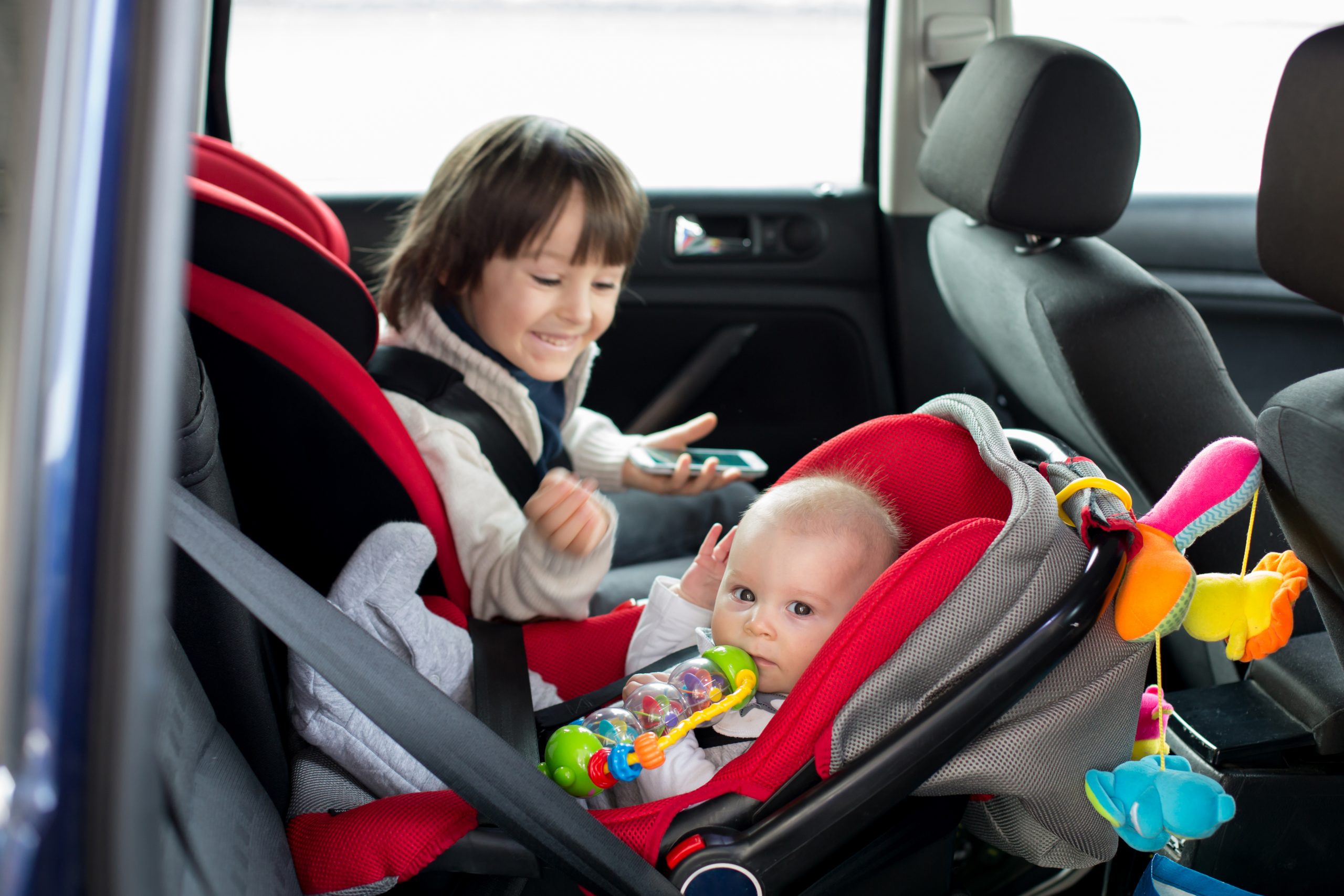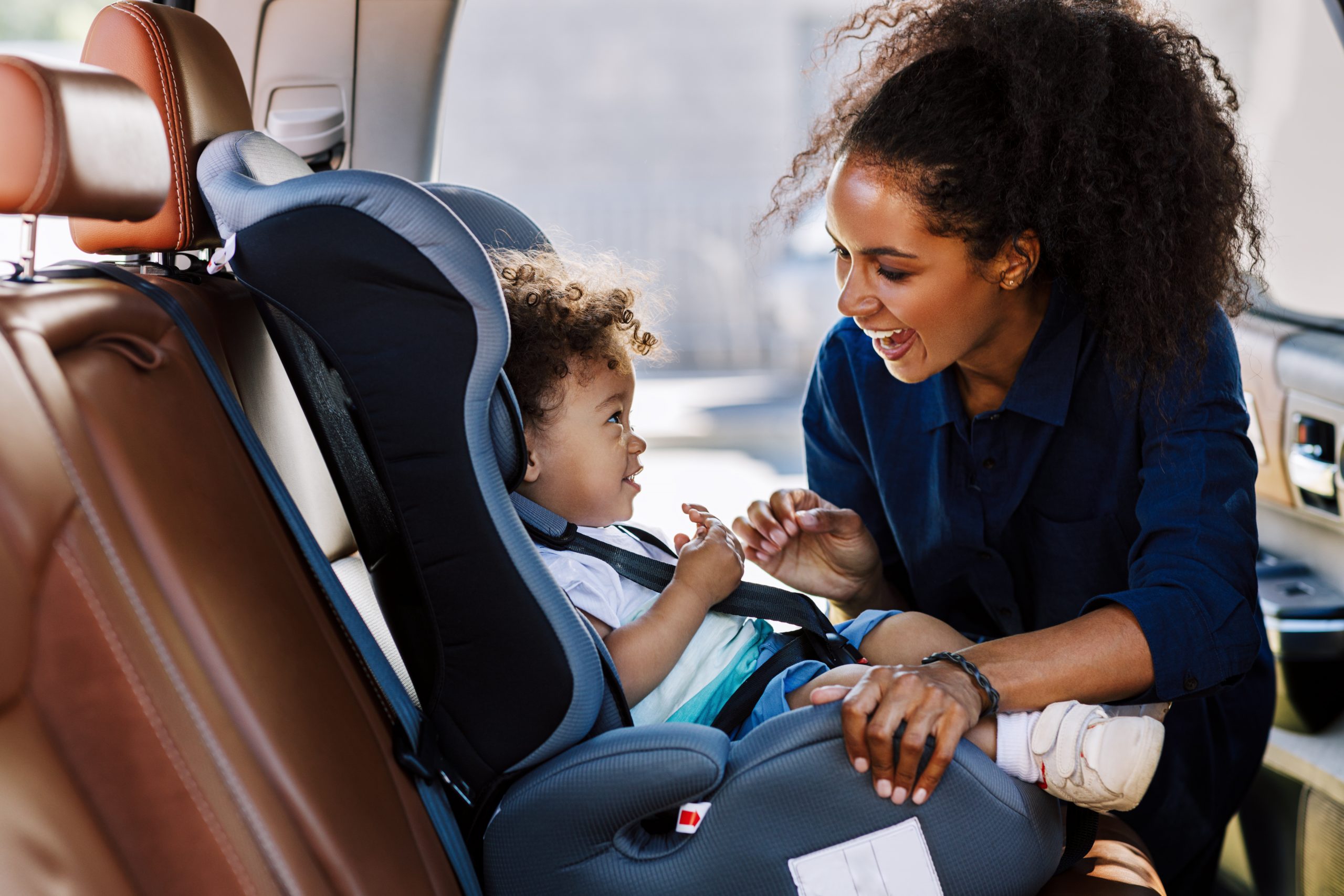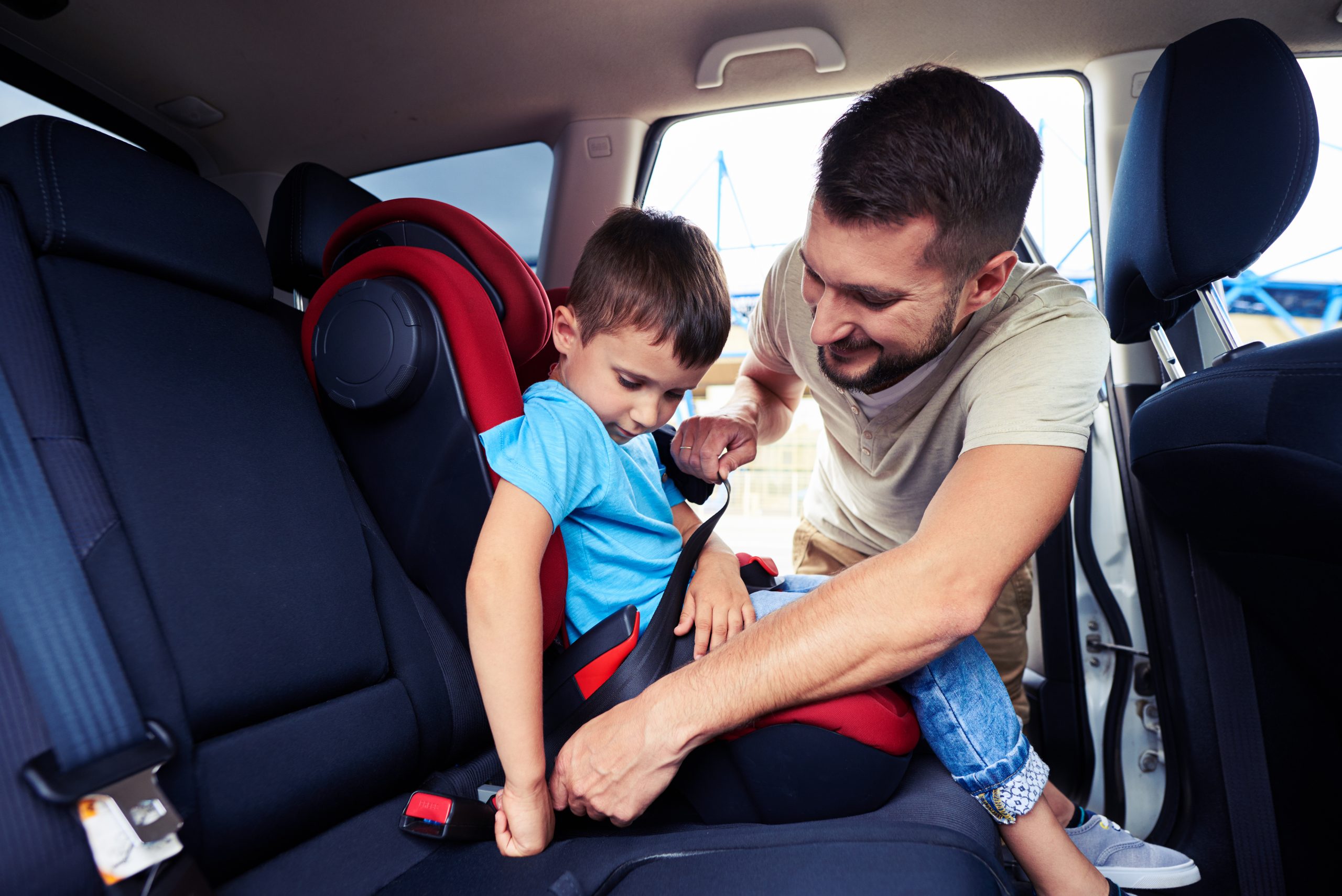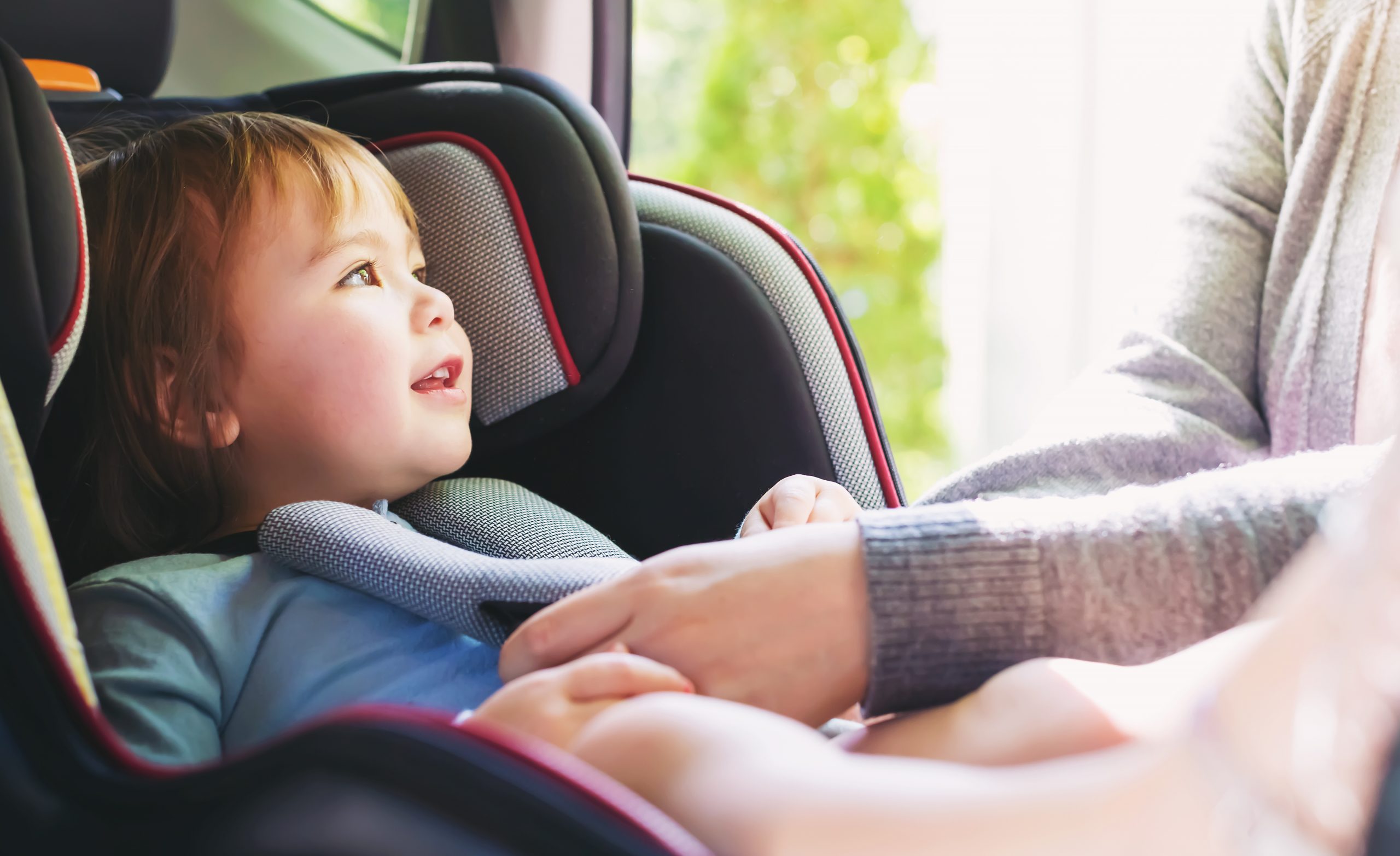From the moment you first hold your child in your arms, every parent knows that they’d do anything to keep that little one safe. And a few short days after giving birth, that safety is put to the test – with the baby’s first car ride.
Installing and using a car seat safely is an essential part of parenting, but it can also be overwhelming and frustrating for new parents. Well here at TorkLaw, we’re ready to help!
Here is a new parent’s guide to car seat safety for kids, from the ideal fit to a few safety tips you might not know.
Who Needs A Car Seat?
First things first: children should be in car seats until they are at least 4 feet nine inches. According to the organization Safe Ride 4 Kids, children should be in some form of car seat until the standard seat belt fits properly. This typically occurs between the ages of 8 and 12.
While car seat laws do vary by state, this recommendation demonstrates just how important car seat safety is. Your child will be in a car seat for more than half of his or her childhood, so it is essential to learn how to install the seat and place your child in it. Your little one’s life is literally on the line!

Car Seat Types
You might have noticed that we said “some form of car seat” in the section above. This is because children use different car seats at different periods of their lives. The various seats give them the greatest protection possible, while also allowing the child to sit comfortably in the car.
Most children will use three car seats in their lifetime:
- A rear-facing (or infant) car seat, which they will use from birth to age 2 or 3
- A convertible (or toddler) car seat, which they will use until ages 4-7
- A booster seat, which they will use until ages 8-12
Where Should the Car Seat Go?
When new parents install their child’s car seat, the first puzzle often arises before the seat is out of the box: where should the seat go? Most parents already know that the child is safest in the back seat, but which seat will give them the greatest protection?
Ideally, your child’s car seat should be installed in the middle of the backseat. This protects the child from the force of the side airbags, just in case you’re in an accident. If you drive an SUV, make sure to put your child in the second row – and no matter what you drive, NEVER put a child in the front passenger seat.
Of course, if you can’t use the middle seat for your child (for example, if you don’t have a seatbelt in the middle), it’s ok to place a child behind the driver or passenger. Just make sure that your child’s car seat is properly installed and fully secure, as that is much more important than the seat’s placement in the car.

Rear vs. Forward-Facing
Your child will start his or her car-riding journey in a rear-facing car seat. This means that you need to install the seat so that your child faces the back of the car and away from you.
This is critically important, as it provides tremendous protection to your little one in an accident; in fact, some experts say that infants are 71% safer if they’re in a rear-facing seat during a car crash. The seat offers extra protection to the head, neck, and spine, thus significantly reducing the risk of fatal injury.
How long should your child face the rear? This depends on your child and your car seat. While the American Academy of Pediatrics suggests keeping your child in a rear-facing seat as long as possible, you will need to consult your car seat’s user manual to see the weight limit. Most children outgrow their infant seats between 9 and 18 months, but if your child in below the weight threshold you can keep them in a rear-facing seat up to age 3.
Installing Common Car Seats
Once you’ve located the proper place for your child’s car seat, you’ll need to install the seat so that it’s completely safe and secure. The specifics here vary based on your car seat, so be sure to thoroughly read your user manual for instructions. However, here are the basic steps for installing most car seats:
Infant-Only Seats
- Place the car seat base in the middle of your vehicle’s back seat
- Thread the seat belt through the base’s “belt path” (see your user manual for car seat specifics). Make sure the belt does not twist in any place
- Buckle the seat belt
- Press down on the car seat base and tighten the seat belt
- Check the car seat base to ensure the proper angle (infants should have a semi-reclined ride to prevent them from blocking their airways with their heads)
- Attach the infant car seat to the base and check that it is secure
Toddler Seats
- Make sure your toddler is old enough and big enough to use a toddler seat (for most car seats, this is when the child surpasses 35 lbs.)
- Place the car seat in the backseat of the car (ideally in the middle seat) in the forward-facing position
- Thread the seat belt through the “belt path” and fix and twists or kinks in the belt
- Buckle and lock the seat belt
- Connect the car seat tether (check your user manual for its location on your seat) and connect it to your vehicle’s tether anchor
Booster Seats
- Choose the right booster seat for your child: early on (around age 8 or 9), a child will need a high-back booster for greater protection, but they may opt for a backless booster by the time they are 12.
- Place the booster into the backset of your car
- Test the booster with your child using it – the shoulder belt should fall across your child’s collarbone and breastbone, while the lap belt needs to lie across the lower part of the pelvis
- Keep the booster buckled in, even when the child isn’t using it (unsecured boosters can become projectiles in a crash)

The Inch Test
Even after following all these steps, some parents may not feel confident that their child is secure. If you want to double-check that your car seat is installed safely, try “the inch test.”
With the seat in place, grab hold of the car seat and try to move it. The seat should not be able to move more than an inch in any direction. If you can’t move the seat, congratulations – your baby will be secure and protected in the event of a crash.
The Safest Fit for Your Child
A secure car seat is very important – but it’s only part of the safety equation. You must also properly buckle your child into the seat if you want them to be completely safe and comfortable in the car. Once again, proper fit will vary based on your specific car seat (and your user manual can give you instructions for your child’s seat). However, here are a few helpful tips:
- Make sure the baby’s head is secure with cushions or a tightly-rolled blanket
- The baby’s safety straps should be at the baby’s shoulders, while the retainer clip fastens at armpit level
- Dress the baby comfortably in clothes that won’t interfere with the locking mechanisms (no jackets or snowsuits)
With these tips, you can guarantee that your child is safe and secure on their first car trip home and every trip after.



